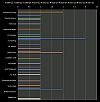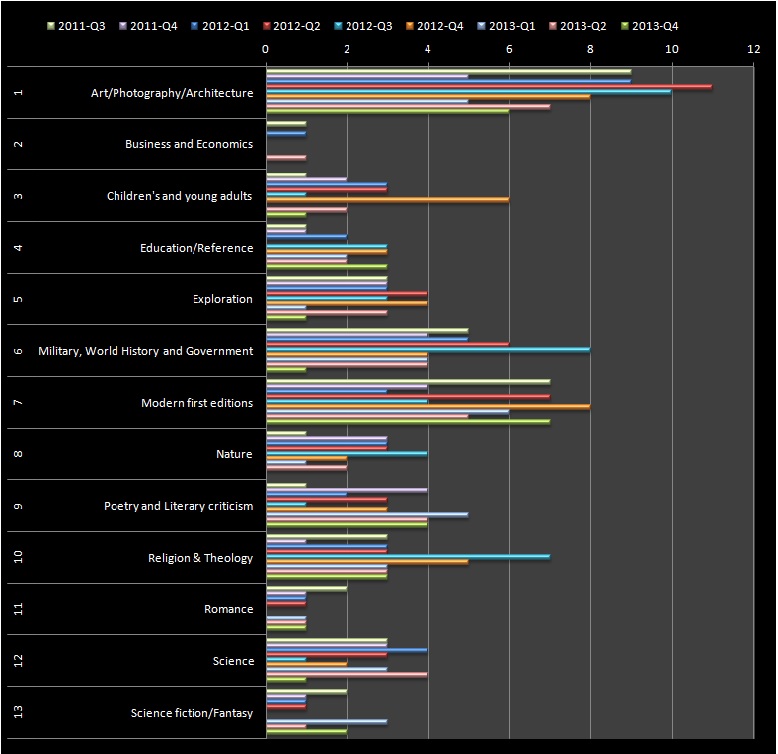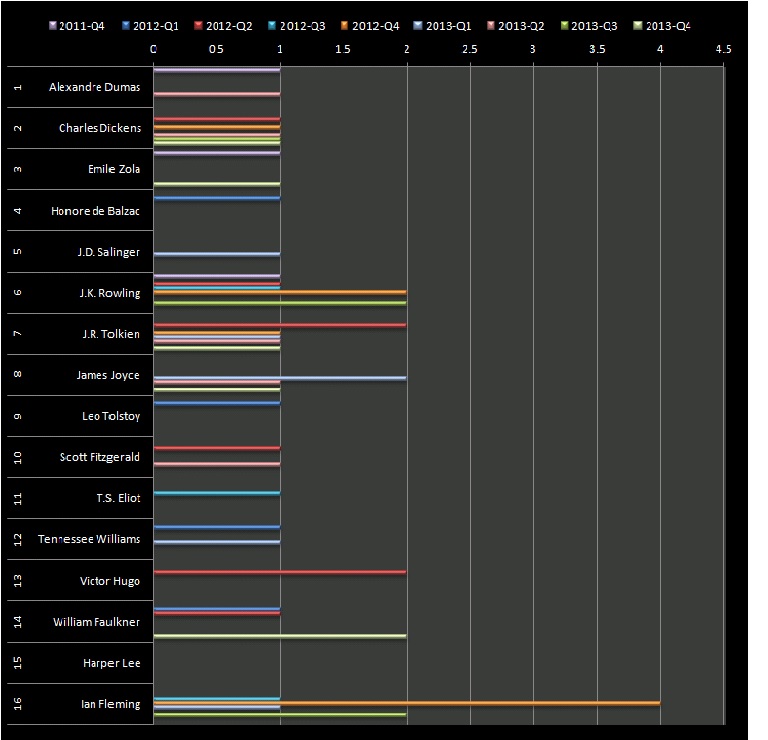In last quarter’s Rare Book Sale Monitor (RBSM) update we outlined how the RBSM handles the ranking of a book’s condition. In this update we will go over some of the workings of the RBSM engine in ranking special features of an antiquarian volume. More specifically, we will cover modeling aspects used to identify data patterns to correlate signed and inscribed books.
Books that are signed by authors come in different forms, each having a certain degree of value added to them based on the nature of the signature and the rarity of the book. In order to be able to compare two signed volumes of the same book (same title, author, imprint etc.), the RBSM conducts certain data pattern matching to rank the importance, and thus the value, of the special feature. Consider, for example, a comparison of the sale price of two identical volumes, one of which is signed by the author and the other which is inscribed by the author. Ranking these two volumes identically should result in an anomaly in recording price changes. While it may be considered an “apples to apples” type of comparison, it should more precisely be considered as a “McIntosh to a Red Delicious” type of comparison.
In the rare book marketplace, there is a clear distinction between the types of books signed by authors. They are listed as follows:
A> Dedication copy: Traditionally a single copy dedicated by the author to someone or something.
B> Association copies: Inscribed by the author to someone famous or notable in the author’s life.
C> Presentation copies: Inscribed by the author to someone who was not of any particular importance.
D> Signed: Simply carrying the author’s signature.
This hierarchy in author signatures in terms of higher collector value tends to vary sometimes, especially over longer periods of time as collectors’ attitudes change. For more on that, please read Ken Lopez’s article “Signed vs Inscribed.” For the sake of the RBSM comparisons, such measurements are not currently at play, since the rank is simply used to compare similar items, instead of placing a relative value difference as in comparing a signed book to an inscribed book, for example.
Most of the effort to avoid errors goes into the parsing and identification of the type of signature. Individuals can do this quite well most of the time, by simply examining and researching the hand written author notes. The RBSM algorithm is using books descriptions to rank appropriately. Such pattern matching must go beyond a simple word matchup on one of the above mentioned keywords – dedication, association, presentation, signed. The simplistic matchup without pattern recognition is venerable to false signal identification, and thus misinterpretation. The following is a list of additional considerations that the RBSM detects and ranks accordingly:
– Signatures or inscriptions may be of the owner of the book, rather than that of the author. RBSM detects the following patterns to make the distinction: <signed, inscribed> by the <author, illustrator, artist>; owner <signature, inscription>.
– Books identified to have originated from an important collection are categorized as association copies. Such entries may contain a pattern matched on: the <collection> copy, where <collection> contains any name.
– The distinction between association copies and presentation copies can be detected by a pattern matched on the following: <inscribed, presented> by <author, illustrator, artist> to <his, her> <wife, husband, secretary, father, friend, colleague, mother….>. Such presentations are associations.
– Simply parsing for the word “dedication” may result in ranking a regular copy as a dedication copy. For example, a description containing a reference to the “dedication page,” which is the name for the page in a book that the author uses to express appreciation as part of the printing, does not constitute a dedication copy.
These are just some of the examples of pattern matching heuristics incorporated in the RBSM engine, in order to identify, categorize and compare collectible books. In future updates will cover more of the RBSM‘s data analysis internals by visiting another important antiquarian book specification: provenance.



{ 2 comments… read them below or add one }
Hi Jim
Thank you for all this resourceful info on rare books!
Can u pl help me with some figures like
What are the sales of rare books all over the world?
Global market is worth how much
Which country continent has higher sales
And some stats on the high end book sales
I will be great full
Warm regards
Poonji
The information we collect and analyze is very targeted. We maintain a sample of books and measure price changes over a period of time.
Sorry we do not have the information you are looking for.
{ 1 trackback }